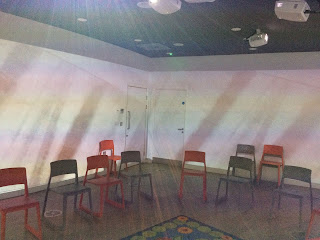Morgan is passionate about art that has a social role, and it was the vison of Alistair Hudson, MIMA's last Director, that attracted Morgan to work at mima. "His new vision for mima is based on the concept of the Useful Museum, as an institution dedicated to the promotion of art as a tool for education and social change."

Hence, the 'about' section on the website reads
"Middlesbrough Institute of Modern Art, part of Teesside University, is moving forward with a civic agenda, to reconnect art with its social function and promote art as a tool for changing the world around us. With this vision, we see ourselves as a ‘useful’ museum.
We wish to have an influence on society, taking a leading role in addressing current issues within politics, economics and culture. Our programmes encompass urgent themes such as housing, migration, inequality, regeneration and healthcare.
We offer changing exhibitions, collection displays, learning activities, projects, and community-focused initiatives that involve multiple artists and publics. These programmes promote creativity for everyone in ordinary life, through education, activism and making.
We have been developing relationships with constituencies in Middlesbrough and beyond. Our ambition is that these help us shape who we are: a public site, open and accessible, diverse and inclusive, and used by all."
Elinor suggested reading Toward a Lexicon of Usership by Stephen Wright.

Elinor suggested reading Toward a Lexicon of Usership by Stephen Wright.

She gave some excellent examples of the ways in which mima is going about achieving their aims, from working with and developing the collection to ensure that underrepresented voices are recognised to providing a free community day lunch once a week for anyone and everyone, allowing people from all walks of life to come together over a shared experience (a meal) and talk. If anyone ever asks "what good is art?" then they should go to mima to find the answer.























































